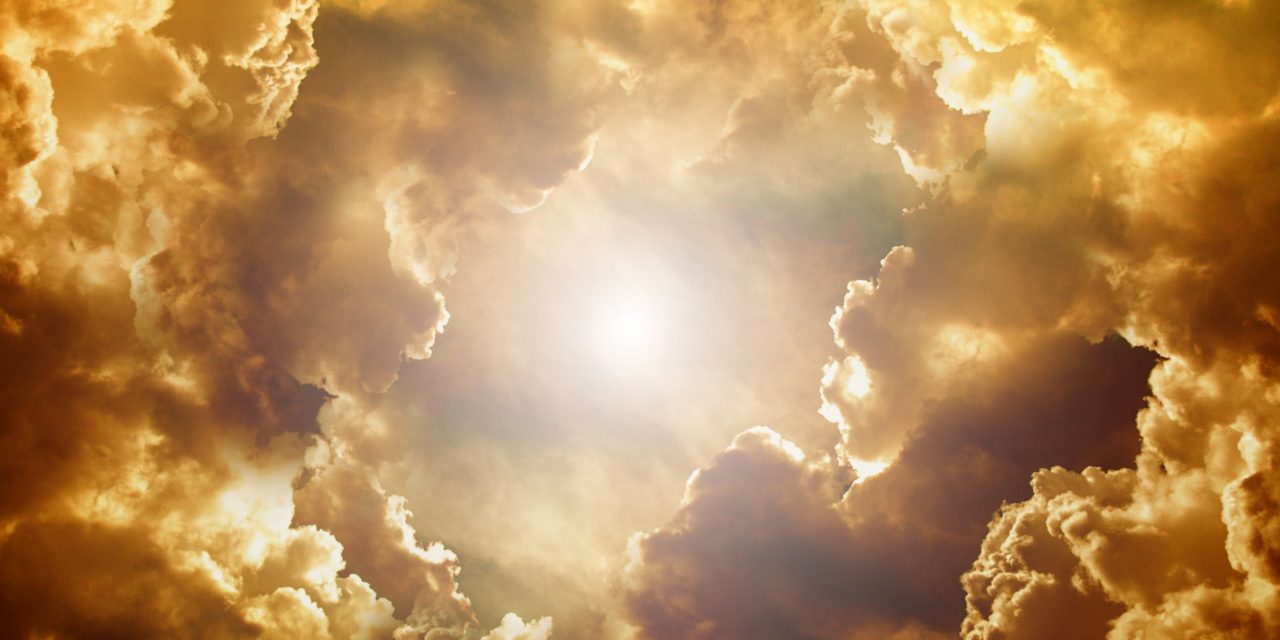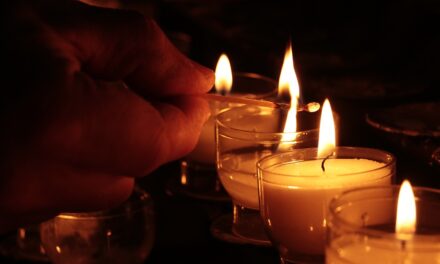All the world over, visible things
typify things invisible.
—Christina Rossetti
Before science became so matter-of-fact scientific, it was the domain of “natural philosophers” who thought about the bigger picture. For them, the study of the cosmos could not be separated from an exploration of the ultimate questions—who are we really and what are the meaning and the purpose of our existence?
Among the tools these pre-scientific thinkers utilized was the poetic device of metaphor. Correspondences abounded, linking all the levels of creation. There were seven planets (including sun and moon), seven metals, seven notes of the natural scale, seven colors in the rainbow, seven heavens. The enduring, corrosion-free character of gold was representative of the ultimate spiritual perfection. The harmony of musical tones implied a similar music of the celestial spheres. Natural philosophers from ancient times through Newton (2) made use of wisdom traditions such as numerology, astrology, Kabala, and esoteric alchemy that embraced this metaphorical approach.
The success of modern science in characterizing and controlling the material world has relegated these alternative ways of knowing to the muddy periphery of the mainstream. Today’s dominant worldview is that of science, and with it comes a tendency to dismiss as unreal anything that cannot be held in the probing pincers of scientific analysis. And yet, there remains a conviction among a large portion of the population that there is something else going on, something “spiritual.” At the core of human existence, there is a yearning for the eternal—the ultimate unseen reality. C. S. Lewis held that this inherent longing is one of the strongest arguments for the reasonableness of faith. (3) However, it is also the source of a great deal of willful ignorance—denial of the validity of evolution and clinging to a literal interpretation of the stories of Genesis despite overwhelming genetic and geologic evidence to the contrary. (4)
We need a way to bridge the gap between science and the spiritual, and I think that resurrecting the metaphorical approach of the natural philosophers could provide such a path forward. Through metaphor, the revelations of science can be connected to realms beyond the reach of scientific analysis. This could potentially provide a rational basis for including spirit in our inventory of what is real.
As embryonic amethysts
Coalesce on earthen crust,
As snowflakes are conceived
On quintessential dust,
Something crystallizes on us. (5)

AS BELOW, SO ABOVE
The reliance on metaphor to understand all aspects of creation is expressed in The Emerald Table, a core text of esoteric alchemy:
It is truth; truth without lies;
Certain truth that that which is above is like
that which is below:
And that which is below is like that which is above
To accomplish the miracles of one thing. (6)
Since the whole universe was “one thing”, created by God from nothing (“no thing”), it all behaved according to the same pattern. By studying the transformations of the more base world of minerals and chemicals in the laboratory (“that which is below”), alchemists hoped to discover the workings of all reality, even the higher, spiritual plane of being (“that which is above”). The ritual of the alchemists was an intricate sequence of chemical transformations that the practitioner hoped would yield the magical “Philosopher’s Stone.” The Stone was the active agent that transformed base metals into gold. Attainment of this elusive substance was, for the true believer, a sign of his worthiness and enlightenment, while the greedy pseudo-alchemists and their benefactors saw the Stone as a source of limitless lucre.
The mystery of the Stone resided not only in the complexity of the procedure to yield it. Its essence was shrouded in paradox, and its realization depended on the spiritual state of the practitioner. The Stone was nearly impossible to obtain, “yet it lay at hand, diffused throughout Nature and awaiting anybody having the clear alchemical vision to pick it up.” (7) The ability to discern the Stone was the key, and this insight depended on the alchemist’s purity of heart.
Perhaps the best way to understand the Philosopher’s Stone is to consider it as any stone. Everything in existence is a microcosm of God’s Creation that exhibits the establishment of order in the midst of chaos, the evolution of complexity in the context of time. Any bit of Creation contains the essence of the whole of Creation (just as any cell contains the whole of an organism’s genetic encoding.) And this Creation includes both the physical and whatever mystery transcends the physical:
The Emerald Tablet is a direct passage to the Soul of the World. The wise men understood that this natural world is only an image and a copy of paradise.
Paulo Coelho, The Alchemist (8)
SOMETHING LIKE A STAR
To begin our metaphorical exploration, we need to focus on something in the physical cosmos that is well understood. Arguably the single most important feature of the universe is the star. The energy from stars empowers everything. A star can in fact be defined more as a process than an object, the thermonuclear reaction that converts matter into energy. Stars can be looked on as discontinuities in the fabric of the cosmos, where the law of conservation of matter is rendered invalid.
Are there any other features of the physical universe that manifest this “discontinuity?” I suggest that we consider the phenomenon of a black hole. The black hole is no longer just a concept for theorists and science fiction writers to play with. Astrophysicists have identified black holes at the centers of galaxies and associated them with other celestial entities. A black hole can be described as a region of such incredible density that even light that ventures too close is unable to escape from its gravitational pull. The question is—what happens to all the energy and matter that disappear into the clutches of a black hole? The conventional wisdom is that it is still there but beyond our perception. But is it possible that, just as the thermonuclear furnace of a bright star provides an alembic for the transmutation of matter into energy, the black hole of a dark star provides that for the transformation of energy into “something else?”
What might this “something else” be? Looking at the physical universe, most scientists would say that it is composed of matter and energy. But isn’t there also another primary component, the abundance of intelligence that seems to pervade all life from the simplest single-celled creature to the mind of man? It is difficult to accept that such intelligence is simply a consequence of random mutation and natural selection. This is the basis of the current debate of evolution vs. intelligent design. But let’s remove God from the picture (for now). I propose that whatever is at the core of intelligence is something purely physical, but something other than matter and energy. Just as starlight, produced locally in myriad locations, radiates to illume and vitalize the entire universe, so might intelligence, created from matter and energy by black holes, fill the cosmos to drive the great complexification of life and the evolution of man.
The suggestion of a third kind of physical something, not matter and not energy, is certainly radical. Is there any evidence to back it up? Astrophysicists and cosmologists are currently confronted by the dual mysteries of dark matter and dark energy, which have been found to make up most of the physical universe. Their existence has been established by their effects on conventional matter and energy, and so they are termed matter and energy. But what if they aren’t matter and energy at all? Energy itself is a construct of the scientific imagination, recognized by its effects on matter. Objects accelerate, objects fall, objects explode, heat is generated as atoms dance more frantically. But energy is not matter. So too, might whatever is responsible for dark matter and dark energy be something other than matter and energy, something that is also at the core of what we call intelligence.

CONSCIOUSNESS AND THE INTERMEDIATE UNIVERSE
The third component of the physical cosmos, which I will term “Intelligence” with a capital “I,” is something purely physical, independent of what we call “consciousness.” It is present in the simplest one-celled creature gyrating towards its food, the slug searching for shade on a summer day. What, then, is consciousness? I think it is another candidate for the metaphorical connection to a star. For consciousness too is a process rather than a thing, a reaction that converts the happenings on the physical plane into images, emotions, and meanings. Like a star, consciousness is an engine of transmutation. The physical is transformed into “something else,” the trans-physical realm of psyche.
The Sufis say there exists a dimension created out of the subtle matter of thought itself…. “(It is) an intermediate world, the world of Idea-Images, of archetypal figures, of subtle substances, of ‘immaterial matter.’ This world is as real and objective, as consistent and subsistent as the intelligible and sensible worlds, it is an intermediate universe….”
—M. I. Barasch, Healing Dreams (9)
The psychical level of being is the residence of the individual soul—the accumulation of experience, emotion, and significance generated during the course of a conscious life. It is also the seat of Jung’s collective unconscious, the destination of shamanic journeys, the realm of lurking “entities” both malignant and benign, and the home of false gods constructed of our beliefs and imagining.

TRINITY OF BEING
In many wisdom traditions, there is the notion of a higher consciousness, referred to as “Christ-Consciousness,” “Krishna-Consciousness” or “Buddha-Consciousness,” which transcends the individual self. We have likened individual consciousness to an engine of transformation—from the physical to the psychical. What about this higher consciousness? If the metaphor is valid, then what is it that emerges from this enlightenment?
Here again we come to a consideration of what is truly spiritual. The term “spirit” is much used these days. “I’m a very spiritual person,” someone might say, but precisely what that means is not very clear. Soulful, religious, God-centered, empathetic, compassionate—all these aspects of non-material being come to mind. But the truly spiritual is beyond all image and emotion. It is what remains when every thought is turned off, and we are in the midst of a perfect meditation. Mircea Eliade, in exploring the teachings of Samkhya Yoga, discusses the distinction between the psychical and spiritual as a key underlying principle:
From all eternity, spirit has found itself drawn into this illusory relation with psychomental experience…. Ignorance consists in confusion between the motionless and eternal (spirit) and the flux of psychomental life. (10)
Just as our metaphorical exploration suggests that physical reality is triune in character, consisting of matter, energy, and Intelligence, so too is the totality of reality three-fold in nature, with aspects that are physical, psychical, and spiritual.
This construct of a triune reality is, of course, echoed in the controversial Christian doctrine of the Trinity, seemingly at odds with the notion of monotheism. God is One, but if God interacts with His Creation, should there not be three interfaces between Deity and temporal reality? The blessings of Jehovah are those of a physical life well-lived. The risen Christ heals the broken heart and damaged soul. But it is the Holy Ghost that releases the mysterious energies of Pentecost.

THE MATRIX OF REALITY
From the notion of a star as an engine of transformation, we have utilized metaphor to spin out a triune matrix of reality. The nature of spirit remains a mystery beyond the probing of science, but metaphor has provided a way of thinking about spirit that is beyond faith, dogma, and superstition. To employ a contemporary analogy, existence consists of three devices (physical, psychical, spiritual) linked by two connections—the USB of individual consciousness and the Wi-Fi of Christ/Krishna/Buddha consciousness.
But why draw this line between the physical and higher levels of existence? The modern view is to seek a more integrative approach, to get away from the old “ghost in the machine” idea. However, there is still great value in the analytical method. “Analysis” is the breaking down of something into its component parts to help gain an understanding of the whole. As a scientific tool, analysis certainly has its limitations. The nature of ordinary salt, sodium chloride, cannot be fully appreciated simply by studying its components sodium (a highly reactive metal) and chlorine (a toxic gas). But if one looks at the history of science, there was a point early on when analysis proved the key to unlocking many of nature’s secrets. The analysis of air’s main components—nitrogen, oxygen, and carbon dioxide—led to an understanding of mechanisms for respiration, photosynthesis, corrosion, and a host of other phenomena. So too might our analysis of reality lead to a significant breakthrough. We live in an age when fact is frequently in conflict with belief, when human energy is devoted to battles over different versions of truth. Perhaps when our physical, psychical, and spiritual perceptions of truth are unified, the golden age envisioned by the natural philosophers can be attained.
The concept of a three-fold matrix of being also suggests a consistency that would delight a practitioner of esoteric alchemy. With only matter and energy present, the physical cosmos is ruled by chaos, in accordance with the thermodynamic concept of entropy. Add intelligence to the mix, and there emerges a predilection towards order and complexity. Likewise, with only the physical and psychical aspects of our lives activated, the “default” condition of experience is karmic suffering. Add spirit to the mix of being and our lives are flooded with freedom and joy.
Heat, pressure, time—
The mind warps and bends,
The soul contracts and chars;
Buried decay slowly descends…
Transforms to gems for diadems. (5)

REFERENCES
-
Christina Rossetti, The Wisdom of Christina Rossetti, ed. Nick Page, Lion Publishing, Oxford, 1999, p.11
-
James Gleick, Isaac Newton, Pantheon Books, NY 2003, p. 99-100
-
Will Voss, Mere Theology, Intervarsity Press, Downers Grove, IL, 2004, p.24
-
Francis Collins, The Language of God, copyright 2006 by Francis S. Collins, Simon & Shuster, New York p.272-274
-
Excerpt from the poem “Philosopher’s Stone” by Richard Krepski, copyright 2012 by Richard Krepski
-
C.A. Burland, The Art of the Alchemists, MacMillan, New York, 1967
-
John Read, From Alchemy to Chemistry, Dover, New York, 1995
-
Paulo Coelho, The Alchemist, copyright 1993 by Paulo Coelho and Alan R. Clark, Harper-Collins, New York, 1993, p.127
-
M.I. Barasch, Healing Dreams, Riverhead Books, New York, 2000 p.249
-
Mircea Eliade, A History of Religious Ideas, Vol. 2, Trans. W. R. Trask, University of Chicago Press, Chicago, 1982, p.57








Loved this article! the division of Science and the life of Spirit has never made sense to me. They seem so integrated, their languages quite able to speak one to the other. And now, adding metaphors in a move away from duality and into connectivity. And the dimension created out of the subtle language of thought itself! Marvelous. I will go back to read this again. going to look at substance-to-spirit.com